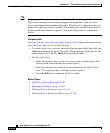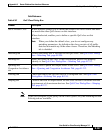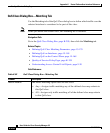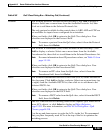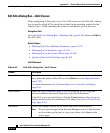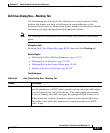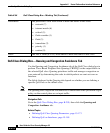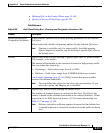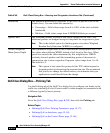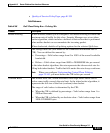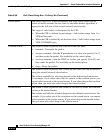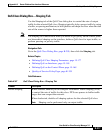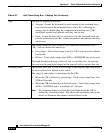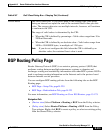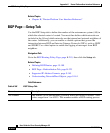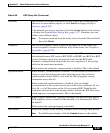
Appendix K Router Platform User Interface Reference
Quality of Service Policy Page
K-214
User Guide for Cisco Security Manager 3.2
OL-16066-01
QoS Class Dialog Box—Policing Tab
Use the Policing tab of the QoS Class dialog box to configure rate limits on the
traffic in a selected QoS class. Excess traffic is either dropped or transmitted with
a different (typically lower) priority.
Navigation Path
Go to the QoS Class Dialog Box, page K-205, then click the Policing tab.
Related Topics
• Defining QoS Class Policing Parameters, page 15-175
• Defining QoS on Interfaces, page 15-165
• Defining QoS on the Control Plane, page 15-168
Bandwidth The minimum bandwidth to guarantee to this class (a specific class or the
default class). You can define this amount by:
• Percentage—Valid values range from 0 to 100% of the total available
bandwidth.
• Kbit/sec—Valid values range from 8-2000000 kilobits per second.
Queue Limit The maximum number of packets that can be queued for the class. Any
additional packets are dropped using tail drop until the congestion is gone.
Note This is the default option for limiting queue size unless Weighted
Random Early Detection (WRED) is configured.
WRED Weight for
Mean Queue Depth
The exponential weight factor to use to calculate the average queue size. Use
this option when defining WRED instead of tail drop for this class. When
queue size exceeds the value determined by this weight factor, WRED
randomly discards packets until the transmitting protocol decreases its
transmission rate to ease congestion. Exponent values range from 1 to 16.
The default is 9.
Note This option is best suited for protocols like TCP, which respond to
dropped packets by decreasing the transmission rate. We recommend
that you do not change the default unless you determine that your
applications would benefit from the change.
Table K-95 QoS Class Dialog Box—Queuing and Congestion Avoidance Tab (Continued)



